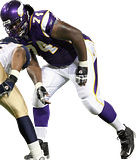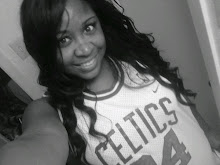EDEN PRAIRIE, Minn. — Even the biggest and strongest of players can be rendered ineffective when the brain and the body are not in sync.
 They don't come much bigger and stronger than Minnesota Vikings left tackle Bryant McKinnie, who was reminded of that last week. After making a push for his first Pro Bowl bid over the first 13 games of the season, McKinnie played so poorly against Julius Peppers and the Carolina Panthers that he was benched in the fourth quarter, the first time that happened in his eight-year career.
They don't come much bigger and stronger than Minnesota Vikings left tackle Bryant McKinnie, who was reminded of that last week. After making a push for his first Pro Bowl bid over the first 13 games of the season, McKinnie played so poorly against Julius Peppers and the Carolina Panthers that he was benched in the fourth quarter, the first time that happened in his eight-year career.The six-foot-eight, 335-pounder charged with protecting Brett Favre's blind side is trying to get back on track this week. The Vikings (11-3) need him to, coming off two ugly losses over their last three games that have shaken their once-firm hold on the NFC's No. 2 seed - and first-round bye - for the playoffs. Minnesota plays at Chicago (5-9) on Monday night.
McKinnie, a former first-round draft pick, insisted this week his performance against the Panthers wasn't as poor as it was made out to be.
"He played a good game. He made a good play on me," McKinnie said, referring to the one sack Peppers was credited with. "But when you go back and really watch the film, he didn't have that many plays on me."
Two penalties, for a false start in the first quarter and for holding in the third quarter, threw McKinnie's mind out of whack. He also said he was focusing too much on his footwork, worried his stance might be tipping off the defence to what type of play was coming - as one report suggested earlier this month.
"It was entirely too much thinking going on," said McKinnie, who joined the starting lineup midway through his rookie season in 2002. He has missed only four games since then - at the beginning of last year because of a league suspension for off-the-field behaviour.
This week, McKinnie has been working on fine-tuning his technique. He also said there's a plan in place to adjust the snap count in order to make it easier for him and rookie right tackle Phil Loadholt.
"That will put me in a better position to get off the ball," McKinnie said. "I just have to make it where I don't have to look at the ball. When I'm in a position to hear it, I don't want to have to look at the ball if I can hear the cadence."
Information from the The Canadian Press was also used in this report. All rights reserved





